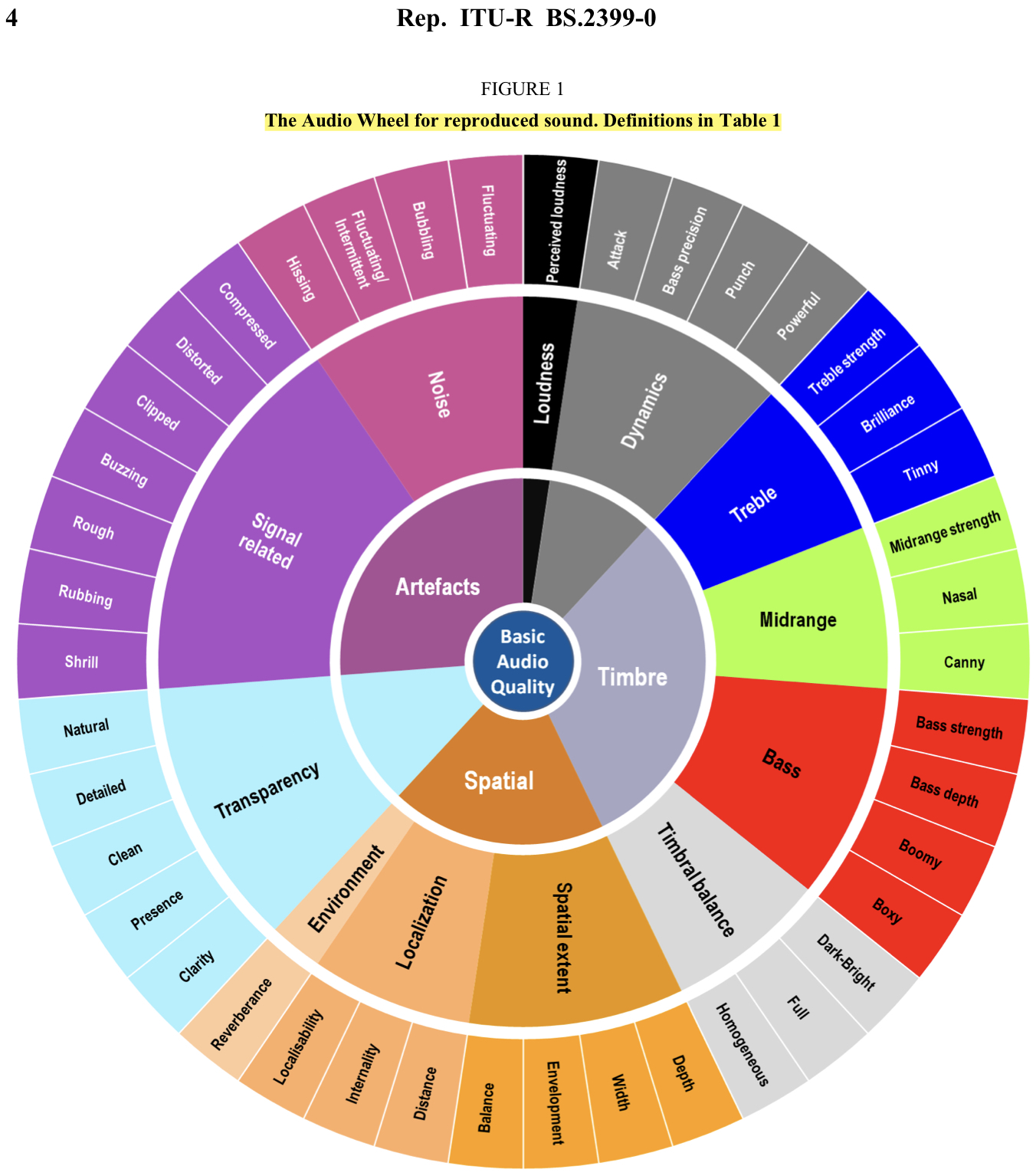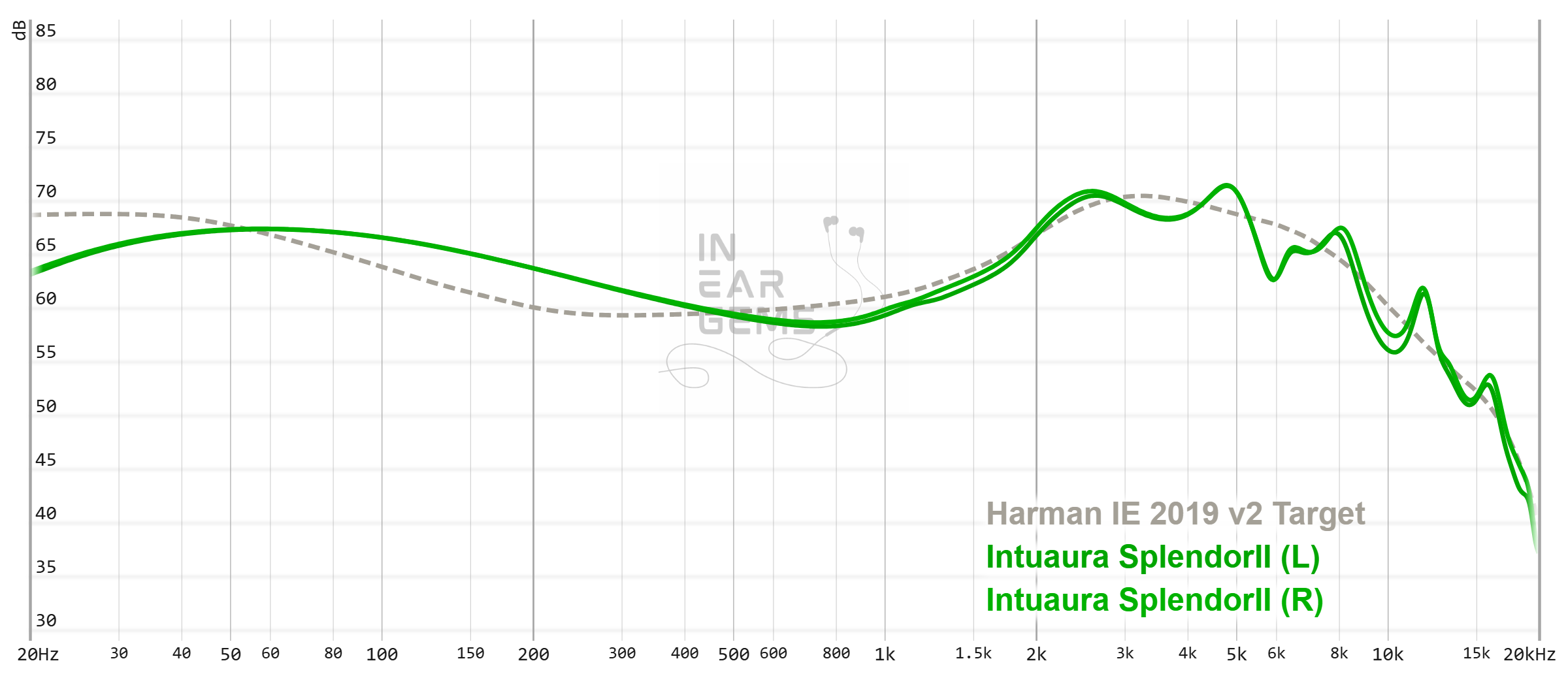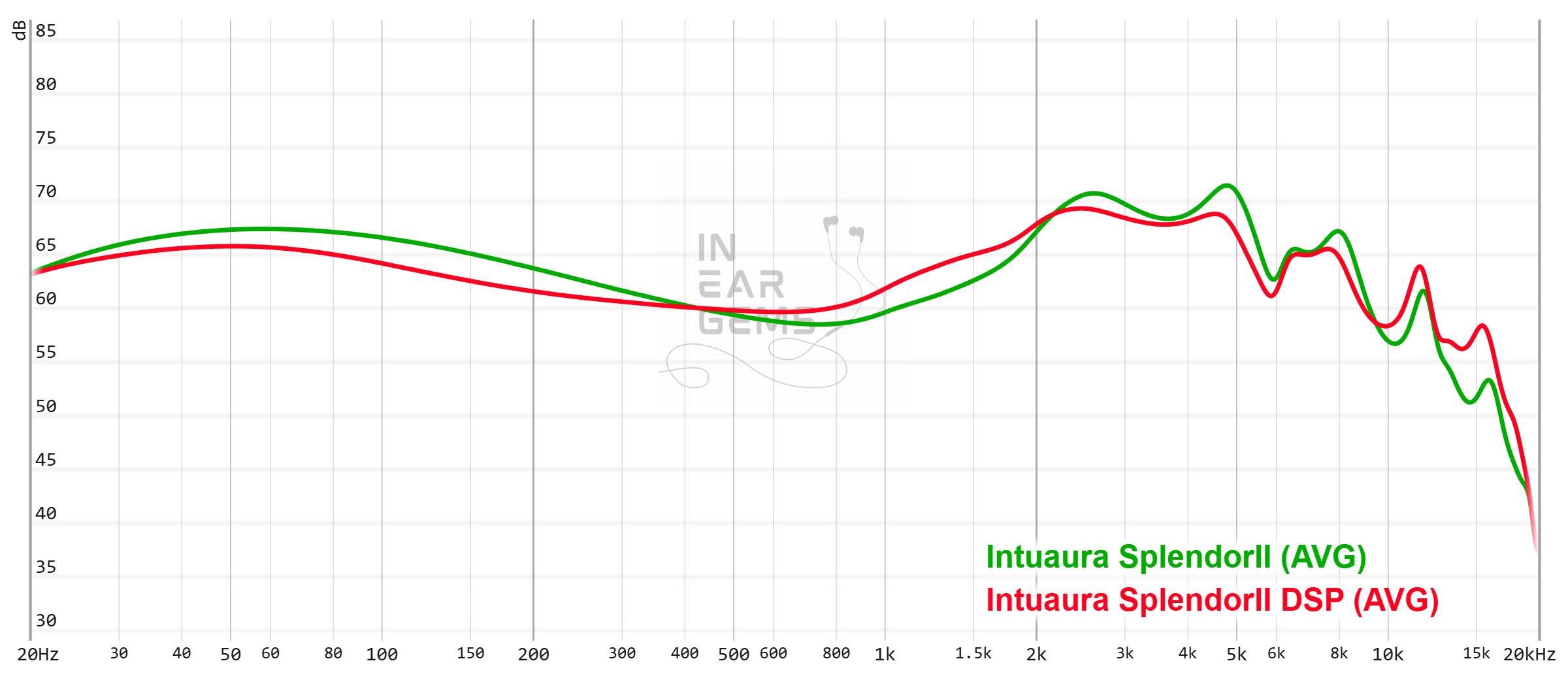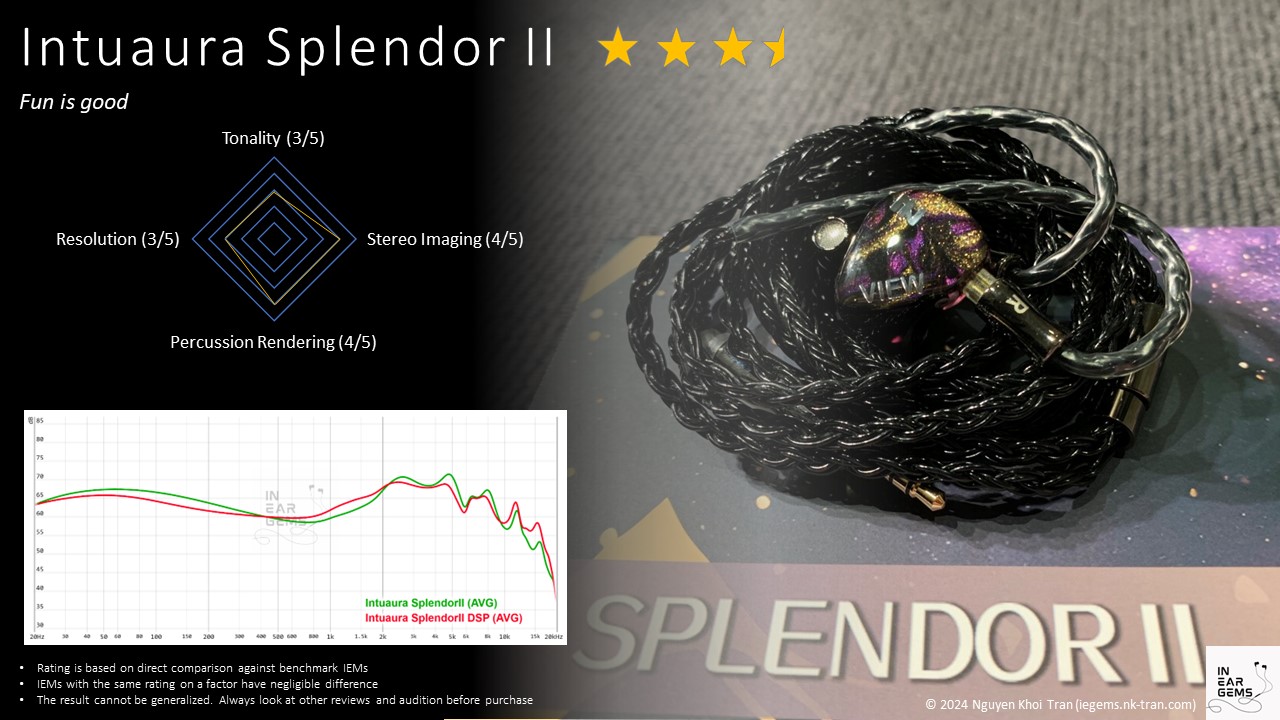Intuaura Splendor II - Fun is Good
Today, we look Splendor II, a single DD IEM from the Chi-Fi manufacturer Intuaura. It’s a fun one. Let’s talk about it.
Forewords
- What I look for in an IEM is immersion. I want to feel the orchestra around my head, track individual instruments, and hear all of their textures and details. I’m not picky about tonality, as long as it is not make the orchestra, violin, cellos, and pianos sound wrong.
- I rate IEMs within with a consistent scale from 1 (Poor) to 3 (Good) to 5 (Outstanding). An overall ranking of 3/5 or above is considered positive.
- Ranking list and measurement database are on my IEM review blog.
- The terminology for subjective impressions in this review is based on the Audio Wheel for reproduced sound defined in the technical report ITU-R BS.2399-0
- This review is based on a review sample from Linsoul (Thank you!). I have no affiliation with or financial interest in Linsoul and Intuaura.
- The unit retails for $259 at the time this review was published. Unaffiliated link: Linsoul
General Information
Splendor II includes a dynamic driver (DD) with a 10mm diameter. The diaphragm features a double-sided composite alloy coating, designed to mimic the characteristics of beryllium metal diaphragms.
The DD is housed in a carefully crafted 3D-printed enclosure. This enclosure includes a large sound tube that efficiently directs sound from the DD’s opening to the earphone nozzles.
.jpeg)
Additionally, the 3D-printed enclosure incorporates a system of air release tubes and vents, which I find particularly interesting. On the shell, there’s a vent hole located at the front of the DD to manage excess pressure. Notably, there’s also a pressure release tube on the sound tube itself, connecting to a concealed chamber behind the DD, discreetly positioned beneath the faceplate. This chamber effectively releases pressure through vents cleverly concealed beneath the engraved word “VIEW” on the upper shell.
Non-sound Aspects
.jpeg)
.jpeg)
.jpeg)
.jpeg)
.jpeg)
.jpeg)
Packaging and accessories: The packaging presents some room for improvement: the outer cardboard sleeve lacks clarity in print quality, resulting in blurry text and artwork. The foam cutouts inside the box are generic and do not fit the contents snugly.
.jpeg)
.jpeg)
.jpeg)
.jpeg)
.jpeg)
.jpeg)
On a positive note, the included accessories are extensive and of good quality: a spacious leather case that provides ample protection, two types of ear tips, protection pouch for earpieces, polishing cloth, a reliable cable, and a USB DAC dongle with built-in EQ.
.jpeg)
.jpeg)
.jpeg)
Ear pieces design: The earpieces are of medium size and shape. The nozzles are thicker and shorter, protruding further from the shells, which enhances ease of wear. The faceplates are hand made and quite beautiful. The colour of the faceplates change depending on the angle and intensity of incoming light.
Fit, comfort, and isolation: These IEMs offer a comfortable fit even during extended listening sessions. However, noise isolation is only average due to the significant amount of venting. On the bright side, this ventilation prevents pressure build-up and driver flex issues.
Ear tips recommendation: I’ve found the stock wide bore ear tips to be effective in my experience.
Sonic Performance
Testing setup:
- Sources: iBasso DX300, L&P W4, FiiO K7, HiBy R3 II
- Cable: stock 3.5mm cable
- Ear tips: stock widebore ear tips
The subjective impression is captured using the lexicon in the Sound Wheel below. I’ll clarify the terminology as I use them. If you want to see more details of the lexicon and related reference, please have a look at the technical report ITU-R BS.2399-0.

Timbre: It is helpful to think of an IEM as a filter that highlights or subdues different parts of the incoming audio signal. This effect can be measured objectively by the squiggly lines below, called Frequency Response (FR) graphs, which measure how loud an IEM is at different frequencies from 20Hz (bass) to 20kHz (upper treble). Subjectivity is how your ears and brain interpret the effect of that filter on your music and decide whether it is “enjoyable.” There are some “rules of thumb” when it comes to tonality, but most interesting IEMs usually bend the rules masterfully.

Figure shows the frequency response of Splendor II against the Harman in-ear target. Measurements were done with an IEC-711-compliant coupler and might only be compared with other measurements from this same coupler. Above 8kHz, the measurement likely does not match the response at the ear drum. Visit my graph database for more comparisons.
The tonal balance of Splendor II can be described as a V-shaped signature, characterized by enhanced bass, lower midrange, and upper midrange compared to the true midrange region. This configuration positions midrange instruments further back in the mix, while bringing the bass forward. As a result, midrange instruments and vocals sound thicker and more integrated with the bass. High notes, such as those on the E string of a violin, may appear more pronounced than other frequencies.
Splendor II exhibits a full frequency response, extending across the spectrum rather than focusing solely on the middle ranges. This presentation ensures a cohesive sound without noticeable gaps between different parts of the frequency spectrum.
.jpeg)
However, the V-shaped tuning of Splendor II may not appeal to those seeking timbral accuracy. For instance, in recordings like “Bach: Sei Solo” performed by Leonidas Kavakos, the violin may sound uneven, with unnatural accentuations on the G and E strings. Similarly, in “Goldberg Variations” performed by Lang Lang, the piano exhibits unevenness, accompanied by a slight sense of boominess and boxiness. On the positive side, Splendor II excels with pop music and large orchestral compositions, where its V-shaped tuning enhances the sense of expansiveness and excitement.

When paired with the supplied DAC/amp, Splendor II undergoes a significant tonal shift towards a more neutral sonic profile. This adjustment results in a flatter frequency response with less emphasis on bass and lower midrange, while the mid-midrange becomes more prominent and the upper midrange gains greater clarity. This tonal balance is arguably more accurate, although I find it somewhat boring comparing to the stock V-shaped signature.
.jpeg)
Bass and perceived dynamic: Dynamic performance is where Splendor II truly shines. Note attacks are precise and articulate, conveying a tight and controlled sound. The bass transients are notably accurate, delivering each note with a satisfying physical impact. This IEM maintains its powerful presence whether at low or high volumes.
The bass response and perceived dynamic range of Splendor II are influenced by the use of the supplied DAC/amp. When used independently, Splendor II exhibits a bassy and punchy character. However, when paired with the supplied DAC/amp, the bass quantity decreases while retaining its characteristic tightness and precision.
.jpeg)
Resolution: To me, “resolution” can be broken down into three components: (1) Sharpness, incisiveness, or “definition” of note attacks (see the figure above). (2) The separation of instruments and vocals, especially when they overlap on the soundstage. (3) The texture and details in the decay side of the notes. The first two give music clarity and make it easy to track individual elements of a mix. The last provides music details and nuances.

The clarity of Splendor II is somewhat constrained by its emphasis on bass and lower midrange frequencies, which can overshadow the midrange presence. Despite this, Splendor II manages to deliver a relatively clean and crisp sound, aided by its quick note attacks. Detail retrieval is commendable, allowing for an enjoyable experience with detail-rich classical recordings without significant loss.
When using the supplied DAC/amp, Splendor II exhibits improved overall clarity due to adjustments in its frequency response. In direct comparisons with my reference models, Splendor II’s resolution stands on par with the Moondrop Blessing 2. Therefore, I assess the resolution of Splendor II at a solid 3/5 level (Good).
.jpeg)
Stereo imaging and soundstage: Stereo imaging or “soundstage” is a psychoacoustic illusion that different recording elements appear at various locations inside and around your head. Your brain creates based on the cues in the recording, which are enhanced or diminushed by your IEMs, your DAC, and your amplifier. In rare cases, with some specific songs, some IEMs can trick you into thinking that the sound comes from the environment (a.k.a., “holographic”)

Regarding soundstage extension, Splendor II offers an expansive audio environment with notable depth perception. For instance, listening to “Gladiator Suite” from Hans Zimmer’s Live album, I experience strong bass presence upfront, flutes positioned farther back, and strings floating back to the sides, creating an illusion of sound originating outside the headstage.
In terms of sound localization, Splendor II demonstrates effective instrument positioning and distance perception. However, while it excels in creating a spacious soundstage with elements seeming to extend beyond the head, precise instrument placement lacks razor-sharp accuracy.
.jpeg)
Comparing against my reference models, Splendor II presents a notably three-dimensional and open soundstage, akin to my Andromeda 2020 (rated 4/5 in my benchmarks). However, when directly compared to the 64 Audio U12T (benchmark for 5/5), Splendor II falls short in achieving the ultimate precision and imaging required for a truly outstanding soundstage.
Multimedia usage:
The V-shaped tuning and expansive soundstage of Splendor II make it an excellent option for video games and movies. In FPS games, I experience a spherical soundstage around my head, allowing precise identification and tracking of sound direction and distance. When watching action movies, the strong bass response and spacious soundstage combine to deliver a thoroughly satisfying cinematic experience.
Driveability
Splendor II is straightforward to drive, performing admirably with the basic Apple dongle DAC/amp: the soundstage extends well, dynamics are solid, and the bass is satisfying. Switching to a higher-quality dongle DAC/amp like the W4, I notice refinements across the spectrum: improved instrument separation, a more expansive soundstage, and slightly sharper bass transients. However, the improvements are subtle rather than dramatic.
Conclusions
Despite my reservations about the tonal balance of Splendor II, I find myself pleasantly surprised by how enjoyable this IEM is to use. While it may not excel in tonal accuracy without the supplied DAC/amp with built-in EQ, its stock tuning offers a fun experience with its robust bass, dynamic sound, and expansive soundstage.
One of its strengths lies in its ease of driving, making it a versatile option beyond just audiophile applications.
Should you consider purchasing this IEM? It largely depends on your music preferences. If you primarily listen to classical music and prioritize tonal accuracy, this IEM may not meet your expectations without relying on the provided DAC/amp. However, if you’re seeking a fun, engaging sound signature, particularly for multimedia enjoyment, Splendor II receives a recommendation from this reviewer.
What I like about this IEM:
- Fun V-shaped signature
- Bass and dynamic
- Soundstage depth
- The openness sensation of the soundstage
- Two sound signatures in one product
- Generous and practical accessories
What could be improved:
- Timbral correctness
- The supplied DAC/amp has a slight hissing noise
Absolute Sonic Quality Rating: 3.5/5 - Very Good
Bias Score: 4/5 - I like this IEM

